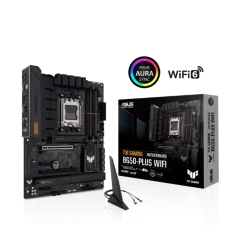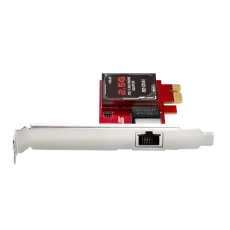- Brand StoreINTELASUSCooler MasterZotacNvidia QuadroAMDGigabyteCorsairGamdiasRazerMSISapphireWestern DigitalKingstonEVMCrucialNextronAsrockDELLBenQGMBelkinLGAnt Esports
- Prebuild PC
- Powered By Asus
- Blogs
- Brand StoreINTELASUSCooler MasterZotacNvidia QuadroAMDGigabyteCorsairGamdiasRazerMSISapphireWestern DigitalKingstonEVMCrucialNextronAsrockDELLBenQGMBelkinLGAnt Esports
- Prebuild PC
- Powered By Asus
- Blogs
- Brand StoreINTELASUSCooler MasterZotacNvidia QuadroAMDGigabyteCorsairGamdiasRazerMSISapphireWestern DigitalKingstonEVMCrucialNextronAsrockDELLBenQGMBelkinLGAnt Esports
- Prebuild PC
- Powered By Asus
- Blogs
Filter by Brand
Filter by Wireless Standard
Filter by Frquency
Filter by VPN Support
Filter by Ports
Filter by Router App
Filter by Parental Control
Filter by IPV6 Support
Filter by MU MIMO
Filter by Warranty
ASUS PRIME X670-P WIFI DDR5 Motherboard
₹38,525.00Original price was: ₹38,525.00.₹27,518.00Current price is: ₹27,518.00.Incl Tax
Nvidia Quadro RTX A4000 16GB Graphics Card
₹115,584.00Original price was: ₹115,584.00.₹82,560.00Current price is: ₹82,560.00.Incl Tax
Intel Arc A750 8GB Graphics Card
₹27,880.00Original price was: ₹27,880.00.₹21,000.00Current price is: ₹21,000.00.Incl Tax
ASUS TUF Gaming B650-PLUS WiFi DDR5 Motherboard
₹31,549.00Original price was: ₹31,549.00.₹22,535.00Current price is: ₹22,535.00.Incl Tax
Showing 1–15 of 29 results
ASUS 4×4 802.11AC PCE-AC88 Wi-Fi Adapter
₹11,900.00Original price was: ₹11,900.00.₹7,078.00Current price is: ₹7,078.00.Incl Tax
Asus AC5300 Tri-band WiFi Gaming router
₹41,000.00Original price was: ₹41,000.00.₹22,598.00Current price is: ₹22,598.00.Incl Tax
ASUS AC66U B1
₹27,825.00Original price was: ₹27,825.00.₹13,726.00Current price is: ₹13,726.00.Incl Tax
ASUS AiMesh AX6100 WiFi System (RT-AX92U 2 Pack)
₹37,500.00Original price was: ₹37,500.00.₹33,500.00Current price is: ₹33,500.00.Incl Tax
ASUS AX3000 Dual Band PCI-E WiFi 6
₹8,500.00Original price was: ₹8,500.00.₹4,712.00Current price is: ₹4,712.00.Incl Tax
ASUS BRT-AC828
₹33,500.00Original price was: ₹33,500.00.₹25,938.00Current price is: ₹25,938.00.Incl Tax
ASUS PCE-AC58BT Wifi Adapter
₹5,500.00Original price was: ₹5,500.00.₹3,708.00Current price is: ₹3,708.00.Incl Tax
ASUS PCE-AX58BT
₹7,384.00Original price was: ₹7,384.00.₹5,274.00Current price is: ₹5,274.00.Incl Tax
ASUS PCE-C2500 2.5G Base-T PCIe Network Adapter
₹5,500.00Original price was: ₹5,500.00.₹3,979.00Current price is: ₹3,979.00.Incl Tax
ASUS ROG Rapture A86U
₹30,000.00Original price was: ₹30,000.00.₹27,500.00Current price is: ₹27,500.00.Incl Tax
Asus ROG Rapture GT-AC2900 WiFi Gaming Router (Black)
₹28,000.00Original price was: ₹28,000.00.₹14,937.00Current price is: ₹14,937.00.Incl Tax
ASUS ROG Rapture GT-AX11000
₹47,800.00Original price was: ₹47,800.00.₹37,938.00Current price is: ₹37,938.00.Incl Tax
ASUS RP-AC55 Repeater
₹6,499.00Original price was: ₹6,499.00.₹2,499.00Current price is: ₹2,499.00.Incl Tax
Asus RT-AC59U-V2 Wifi Router White
₹8,500.00Original price was: ₹8,500.00.₹4,750.00Current price is: ₹4,750.00.Incl Tax
ASUS RT-AC68U (Pack of 2)
₹30,199.00Original price was: ₹30,199.00.₹21,938.00Current price is: ₹21,938.00.Incl Tax
What Type of Network Adapters Do I Need?
Knowing the range of different network adapters makes it easier to understand which type of adapter best suits your personal or business needs. From Ethernet adapters to network interface card options and more, network adapters allow devices to connect to a local computer network through either WiFi (wireless) or Ethernet (wired) formats.
How Does a Network Adapter Work?
The network adapter allows the device to communicate over the local area network (LAN), connecting to the internet or other computers.
Wireless network adapters, such as those on laptop computers and tablets, take the computer’s signals and convert them into radio waves that transmit via an antenna (visible or hidden). The radio frequency signals are electromagnetic waves that vibrate as they travel through the air on the appropriate bands or frequencies. The frequencies are usually 2.4 GHz and 5 GHz, with 14 channels. The radio waves go to routers and then broadband modems or internal networks.
The adapters for desktop computers typically come preinstalled. If a desktop doesn’t offer a preinstalled adapter, a card can connect to the PCMCIA slot or a mini PCI slot. Likewise, old desktop computers may allow a retrofitted Ethernet adapter plugs into a PCI slot. Some electronic cards even fit into a memory card port. As another option, a USB-style Ethernet adapter complies with desktop and laptop computers or into an Ethernet port using an Ethernet network cable, as was common at colleges and universities in the recent past.
Different Types of Network Adapters
You can find a suitable network adapter for wireless or wired networks, depending on your needs. Discover more about different network adapters to guide your decision on the best choice for your home or business network.
Also known as an Ethernet adapter, a network interface card (NIC) is a chip or circuit board that generally comes preinstalled on a computer or device. The NIC allows the computer to connect to a network while also providing support for various technical functions such as data transmission, partitioning, and direct memory access, to name a few. The network card is the layer between the device and the network.
Wireless NICs rely on an antenna to communicate through radio frequency waves on a WiFi connection. Wired NICs rely on an input jack and wired LAN technology, such as Ethernet’s most popular one. It may connect via USB.




















